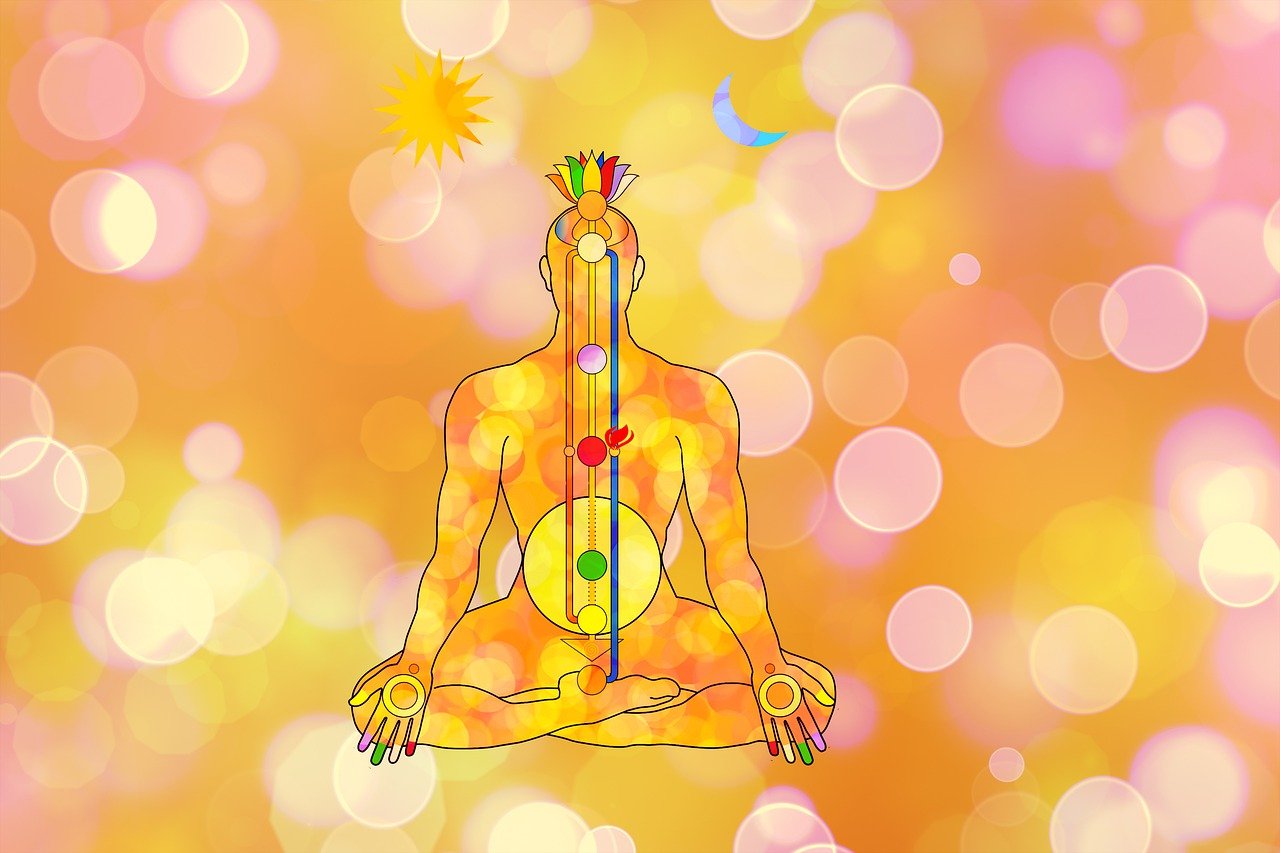Ida Pingala Sushumna Nadis forms a gateway of energy from Muladhara to the brain. Ida is feminine, Pingala is masculine and Sushumna is central Nadi. Breathing exercises of Pranayama are useful in channeling the flow in the central channel.
Last updated on
Table of Contents
What are the Nadis?
Nadis are the channel through which the Prana flows. You can click here to read about 5 types of Pranas. Various Puranas and yogic scriptures suggest there are 72,000 Nadis. The number varies with various other scriptures. The Kshurika Upanishad has the following verse.
There are one-hundred and one nāḍīs. Of them Suṣumnā is regarded the best, which rests in the Supreme, untainted, of the same form as Brahman. Iḍā lies to the left and Piṅgalā to the right. Between them is the Supreme Abode, and he that knows It knows the Veda.”
Sushumna is also one of the seven principal rays of the Sun god as per Hindu Scriptures.
What is the Ida Pingala Sushumna Nadis trio?
The triad of Ida, Pingala, and Sushumna Nadis are central amongst all the Nadis. Ida Nadi represents the feminine energy, Pingala represents the masculine energy and Sushumna is the central or the neutral channel.
Ida is also the other name for the goddess of knowledge. You can acquire better knowledge if you conquer the energy flow in this Nadi. Pingala is another name for solar energy which is masculine in nature. In astrology, Pingala gives the effect of the sun in its Dasha period. It is the solar flare lying within the body in the case of the Nadi.
The Sushumna Nadi is the central channel. Enlightenment seeks the movement of Kundalini from this channel itself. You can click here to read about Kundalini Yoga.

How to cleanse the Nadis so that Kundalini flows from the Sushumna Nadi?
There are various ways to clear the pranic flow from all the nadis. However, most importantly each chakra has its own way of cleansing. We have provided the exercise to cleanse all of your pranic flows in the Kundalini Yoga Article and Yogic Meditation article. The 7 chakras have a direct relationship with Ida Pingala Sushumna Nadis. These seven chakras are Sahasrara, Ajna, Vishuddi, Anahata, Manipura, Svadhistana and Muladhara.
How to balance Ida and Pingala?
Ida and Pingala are balanced using a proper Kriya . The methods are mentioned in the famous book of Yoga namely Hatha Yoga Pradipaka. They are as follows. Kapalabhati, Trataka, Neti, Dhouti, Nauli and Vasti. They are the tough exercises only intended for the monks. For normal people, the only way is to follow the path of Ashtanga Yoga.
The balance of Ida-Pingala can activate the Sushumna but again it can only give the self-realization and finding the own nature. However, understanding the flows in the Ida Pingala Sushumna trio is tough.
The birthplace of Indra and Brahmarandhra.
Many of the scriptures talks that the central channel, Sushumna Nadi ends in the birthplace of Indra. While some of the scriptures also mention that it connects to Brahmarandhra. We can make an inference that somewhere near the Brahmarandhra, there is the birthplace of Indra. It is located in the Sahasrara Chakra.

In Physical Body, Indra is not about the Devta Indra. It is about the senses. These senses are the five senses of knowledge, five senses of karma, and one manas. You can find the names of 11 senses in our introductory article on Sankhya.
Some who reach the Brahmarandhra find their own nature. It is as per the Taittariya Upanishad. If someone is able to make the energy flow from the Sushumna to its final point, there is ecstasy.
Sushumna Nadi ends in Brahmarandhra, the hole of Brahman.
Brahman is the supreme consciousness as per the Hindu Philosophy. The direct translation of the word Brahmarandhra would be the hole of Brahman. The Brahmarandhra is thought to be the place from which one can interact with the Devtas and Siddhas.
However, one has to reach the end of Brahmarandhra to access the highest Brahman. In simple words, it is the gateway of supreme consciousness.
The science behind Ida Pingala and Sushumna
The metaphysics is associated with the balance of flows in the three nadis. The symmetry is to be maintained in the kriya yoga for breathing. It is because everything comes in opposites consisting of symmetry. If you have a left hand you will have a right hand. If you have a left eye you will have a right eye. Your body is the result of this symmetry. However, your psychology is not balanced because of your thought process. The balance can be achieved either by either of the two masculine and feminine nadis or directly by focusing on the Sushumna.

Breathing Exercise for Ida Pingala Sushumna.
The best breathing exercise for Ida Pingala Sushumna activation is to practice Rechaka, Puraka, and Kumbhaka Pranayama. It is called Kumbhaka only while you practice. Here is a video by Dr. Varunveer on Kumbhaka Pranayama for Ida Pingala Sushumna.
You can also read about techniques for meditation or meditation for beginners from the expert to clear ida pingala sushumna in a better way.



